



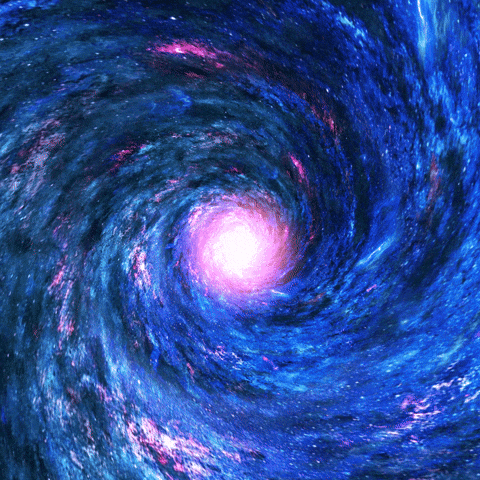
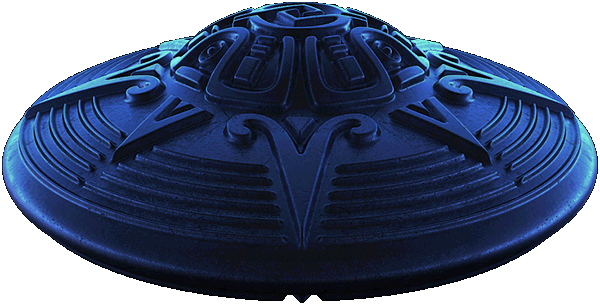

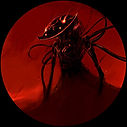
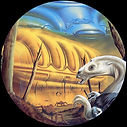

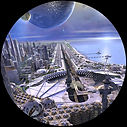

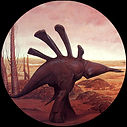
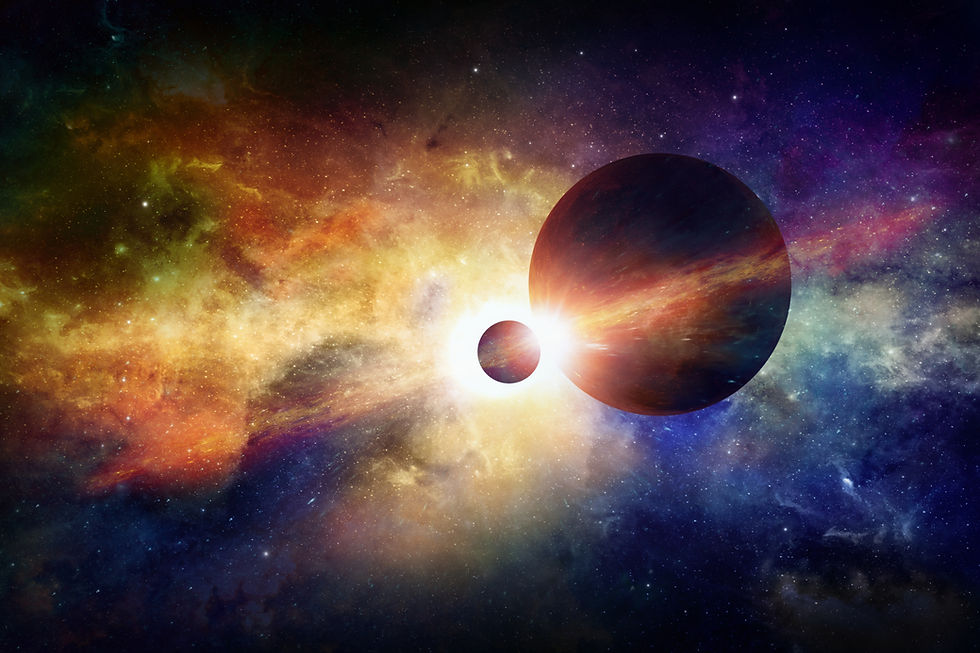
SOLAR SYSTEM
About the Planets
Learn about the planets in our solar system.
The solar system has eight planets: Mercury, Venus, Earth, Mars, Jupiter, Saturn, Uranus, and Neptune. There are five officially recognized dwarf planets in our solar system: Ceres, Pluto, Haumea, Makemake, and Eris.
Earth is a dynamic and stormy planet with everything from brief, rumbling thunderstorms to enormous, raging hurricanes, which are some of the most powerful and destructive storms on our world. But other planets also have storm clouds, lightning – even rain, of sorts. Let’s take a tour of some of the unusual storms in our solar system and beyond.
Some large craters on Mercury have smooth interiors similar to craters on Earth's Moon that were flooded with lava.
NASA/Johns Hopkins University Applied Physics Laboratory/CIW
At Mercury: A Chance of Morning Micrometeoroid Showers and Magnetic ‘Tornadoes’
How about a micrometeoroid shower to start your day? Mercury, the planet nearest the Sun, is scorching hot, with daytime temperatures of more than 800 degrees Fahrenheit (about 430 degrees Celsius). It also has weak gravity – only about 38% of Earth's – making it hard for Mercury to hold on to an atmosphere.
Its barely there atmosphere means Mercury doesn’t have dramatic storms, but it does have a strange "weather" pattern of sorts: it’s blasted with micrometeoroids, or tiny dust particles, usually in the morning.
It also has magnetic “tornadoes” – twisted bundles of magnetic fields that connect the planet’s magnetic field to space. NASA’s Mercury MESSENGER spacecraft encountered the magnetic twisters during its second flyby Oct. 6, 2008.
NASA’s Magellan orbiter used powerful radar to peer through Venus’ permanent cloud cover and map the surface.
NASA/SSV/MIPL/Magellan Team
At Venus: Earth’s ‘Almost’ Twin is a Hot Mess
Venus is often called Earth's twin because the two planets are similar in size and structure. But Venus is the hottest planet in our solar system, roasting at about 900 degrees Fahrenheit (480 degrees Celsius) under a suffocating blanket of sulfuric acid clouds and a crushing atmosphere.
Add to that the fact that Venus has lightning, maybe even more than Earth. "Not a very good place to vacation, that is for sure," said Christopher Russell, a NASA-sponsored scientist on the European Space Agency's Venus Express mission, the team that found the lightning.
In visible light, Venus appears bright yellowish-white because of its clouds. Also, Japanese researchers found a giant streak-like structure in the clouds based on observations by the Akatsuki spacecraft orbiting Venus.
Hurricane Idalia makes landfall near Keaton Beach, Florida, on Aug. 30, 2023, as a strong Category 3 storm. Idalia had maximum sustained winds of 125 mph. To its east, Hurricane Franklin can be seen churning over the Atlantic near Bermuda. According to hurricane specialist Philip Klotzbach, it is the first time since 1950 that the Atlantic had two hurricanes with 110+ mph winds in August simultaneously.
NOAA/GOES East (GOES 16)
At Earth: Multiple Storm Hazards Likely
Earth has lots of storms, including thunderstorms, blizzards and tornadoes. Tornadoes can pack winds over 300 miles per hour (480 kilometers per hour) and can cause intense localized damage.
But no storms match hurricanes
in size and scale of devastation. Hurricanes, also called typhoons or cyclones, can last for days and have strong winds extending outward for 675 miles (1,100 kilometers). They can annihilate coastal areas and cause damage far inland.
The Galveston Hurricane of 1900
was the deadliest in weather disaster in United States history. According to NOAA, storm tides of 8 to 15 feet inundated Galveston Island, and the nearby Texas coast. These tides were largely responsible for the 8,000 deaths (estimates range from 6,000 to 12,000) attributed to the storm.
Side-by-side movies show how dust enveloped the Red Planet in 2018, courtesy of NASA's Mars Reconnaissance Orbiter.
NASA/JPL-Caltech/MSSS
At Mars: Hazy with a Chance of Dust Storms
Mars is infamous for intense dust storms, including some that grow to encircle the planet. In 2018, a global dust storm blanketed NASA's record-setting Opportunity rover, ending the mission after 15 years on the surface.
Mars has a thin atmosphere of mostly carbon dioxide. To the human eye, the sky would appear hazy and reddish or butterscotch colored because of all the dust suspended in the air.
Dust will be an issue for future missions to Mars as well. It could affect electronics and mechanical systems, as well as the health of astronauts, although Martian dust storms are not really as intense as the one that stranded fictional astronaut Mark Watney (Matt Damon) in the 2015 movie "The Martian."
Besides Earth, Mars is the only planet with weather stations. Mars Curiosity rover has the latest weather from Gale crater. And the Perseverance rover has the forecast for Jezero crater.
Winds around Jupiter's Great Red Spot are simulated in this JunoCam view that has been animated using a model of the winds there. The wind model, called a velocity field, was derived from data collected by NASA's Voyager spacecraft and Earth-based telescopes.
NASA/JPL-Caltech/SwRI/MSSS/Gerald Eichstadt/Justin Cowart
At Jupiter: A Shrinking Icon
It’s one of the best-known storms in the solar system: Jupiter’s Great Red Spot. It’s raged for at least 300 years, but it’s been shrinking for a century and a half. Nobody knows for sure, but it's possible the Great Red Spot could eventually disappear.
NASA's Juno spacecraft is giving scientists new insights on the storm. “Juno data indicate that the solar system's most famous storm is almost one-and-a-half Earths wide, and has roots that penetrate about 200 miles (300 kilometers) into the planet's atmosphere," said Scott Bolton, Juno's principal investigator.
In the 20th century, three smaller ovals merged to form the Little Red Spot, about half the size of its larger cousin. With no solid surface to slow them down, Jupiter's spots can survive for many years.
This colorful view from NASA's Cassini mission is the highest-resolution view of the unique six-sided jet stream at Saturn's north pole known as "the hexagon."
NASA/JPL-Caltech/SSI/Hampton University
At Saturn: A Storm Chasers Paradise
Saturn has one of the most extraordinary atmospheric features in the solar system: a hexagon-shaped cloud pattern at its north pole. The hexagon is a six-sided jet stream with 200-mile-per-hour winds (about 322 kilometers per hour). Each side is a bit wider than Earth and multiple Earths could fit inside. In the middle of the hexagon is what looks like a cosmic belly button, but it’s actually a huge vortex that looks like a hurricane.
Storm chasers would have a field day on Saturn. Part of the southern hemisphere was dubbed "Storm Alley" by scientists on NASA's Cassini mission because of the frequent storm activity the spacecraft observed there. The storms can rage for years, so there’s no rush to catch them. At least one storm chased itself: In 2010 and 2011, scientists witnessed a storm that churned its way around the planet until it ran into its own tail and sputtered out.
This near-infrared, color mosaic from NASA's Cassini spacecraft shows the Sun glinting off of Titan's north polar seas.
NASA/JPL-Caltech/University of Arizona/University of Idaho
Titan: Methane Rain and Dust Storms
Earth isn’t the only world in our solar system with bodies of liquid on its surface. Saturn’s moon Titan has rivers, lakes and large seas. It’s the only other world with a cycle of liquids like Earth’s water cycle, with rain falling from clouds, flowing across the surface, filling lakes and seas and evaporating back into the sky.
But there is a big difference: On Titan, the rain, rivers and seas are made of methane instead of water.
Data from the Cassini spacecraft also revealed what appear to be giant dust storms in Titan’s equatorial regions, making Titan the third solar system body, in addition to Earth and Mars, where dust storms have been observed.
During its routine monitoring of the weather on our solar system's outer planets, NASA's Hubble Space Telescope uncovered a new mysterious dark storm on Neptune (right) and provided a fresh look at a long-lived storm circling around the north polar region on Uranus (left).
NASA, ESA, A. Simon (NASA Goddard Space Flight Center), and M.H. Wong and A. Hsu (University of California, Berkeley)
At Uranus: A Polar Storm and...What’s That Smell?
Uranus has long been the butt of jokes and some recent research may make things worse.
Scientists were trying to solve a puzzle about clouds on the ice giant planet: What were they made of? When Voyager 2 flew by in 1986, it spotted few clouds. This was due in part to the thick haze that envelops the planet, as well as Voyager's cameras not being designed to peer through the haze in infrared light.
But in 2018, NASA’s Hubble Space Telescope snapped an image showing a vast, bright, stormy cloud cap across the north pole of Uranus. Also in 2018, researchers using the Gemini North telescope on Hawaii's Mauna Kea discovered that clouds on Uranus are made up of hydrogen sulfide – the stinky, rotten-egg smelling gas. So go ahead, make another joke, but the joke might be on you: the planet's name is actually pronounced YUR-uh-nuss, not yur-AY-nuss.
This Hubble Space Telescope image confirms the presence of a dark vortex in the atmosphere of Neptune. The full visible-light image at left shows that the dark feature resides near and below a patch of bright clouds in the planet's southern hemisphere. The full-color image at top right is a close-up of the complex feature. The vortex is a high-pressure system. The image at bottom right shows that the vortex is best seen at blue wavelengths.
NASA, ESA, and M.H. Wong and J. Tollefson (UC Berkeley)
At Neptune: Methane Clouds and Vanishing Storms
Neptune is our solar system's windiest world. Winds whip clouds of frozen methane across the ice giant planet at speeds of more than 1,200 miles per hour (2,000 kilometers per hour) – about nine times faster than winds on Earth.
Neptune also has huge storm systems. In 1989, NASA’s Voyager 2 spotted two giant storms on Neptune as the spacecraft zipped by the planet. Scientists named the storms “The Great Dark Spot” and “Dark Spot 2.”
Five years later, in 1994, NASA’s Hubble Space Telescope took images of Neptune from its vantage point in Earth orbit. Scientists hoped to see the storms again, but both had vanished. Scientists now think new storms crop up on Neptune every four to six years, with each storm lasting up to six years.
WASP-43b, is no place to call home. It is a world of extremes, where seething winds howl at the speed of sound from a 3,000-degree-Fahrenheit “day” side, hot enough to melt steel, to a pitch-black “night” side with plunging temperatures below 1,000 degrees Fahrenheit. - Full image and caption
NASA/ESA
It’s Not Just Us: Extreme Weather in Another Solar System
Scientists using NASA’s Hubble Space Telescope made a global map of the glow from a turbulent planet outside our solar system. The observations show the exoplanet, called WASP-43b, is a world of extremes. It has winds that howl at the speed of sound, a 3,000-degree-Fahrenheit (1,600-degree-Celsius) day side, and a pitch-black night side where temperatures are cooler, but still a sizzling 1,000 degrees Fahrenheit (540 degrees Celsius).
Discovered in 2011, WASP-43b is located 260 light-years away. It’s about the same size as Jupiter. The planet is too distant to be photographed, but astronomers detected it by observing dips in the light of its parent star as the planet passes in front of it.

Hubble Sees a Celestial Cannonball
NASA Hubble Mission Team
Goddard Space Flight Center
Oct 25, 2024
Image Article
ESA/Hubble & NASA, M. Sun
The spiral galaxy in this NASA/ESA Hubble Space Telescope image is IC 3225. It looks remarkably as if it was launched from a cannon, speeding through space like a comet with a tail of gas streaming from its disk behind it. The scenes that galaxies appear in from Earth’s point of view are fascinating; many seem to hang calmly in the emptiness of space as if hung from a string, while others star in much more dynamic situations!
Appearances can be deceiving with objects so far from Earth — IC 3225 itself is about 100 million light-years away — but the galaxy’s location suggests some causes for this active scene, because IC 3225 is one of over 1,300 members of the Virgo galaxy cluster. The density of galaxies in the Virgo cluster creates a rich field of hot gas between them, called ‘intracluster medium’, while the cluster’s extreme mass has its galaxies careening around its center in some very fast orbits. Ramming through the thick intracluster medium, especially close to the cluster’s center, places enormous ‘ram pressure’ on the moving galaxies that strips gas out of them as they go.
As a galaxy moves through space, the gas and dust that make up the intracluster medium create resistance to the galaxy’s movement, exerting pressure on the galaxy. This pressure, called ram pressure, can strip a galaxy of its star-forming gas and dust, reducing or even stopping the creation of new stars. Conversely, ram pressure can also cause other parts of the galaxy to compress, which can boost star formation. IC 3225 is not so close to the cluster core right now, but astronomers have deduced that it has undergone ram pressure stripping in the past. The galaxy looks compressed on one side, with noticeably more star formation on that leading edge (bottom-left), while the opposite end is stretched out of shape (upper-right). Being in such a crowded field, a close call with another galaxy may also have tugged on IC 3225 and created this shape. The sight of this distorted galaxy is a reminder of the incredible forces at work on astronomical scales, which can move and reshape entire galaxies!
Introduction
Our solar system includes the Sun, eight planets, five officially named dwarf planets
, and hundreds of moons, and thousands of asteroids and comets. Our solar system is located in the Milky Way, a barred spiral galaxy with two major arms, and two minor arms. Our Sun is in a small, partial arm of the Milky Way called the Orion Arm, or Orion Spur, between the Sagittarius and Perseus arms. Our solar system orbits the center of the galaxy at about 515,000 mph (828,000 kph). It takes about 230 million years to complete one orbit around the galactic center.
Unable to render the provided source
Namesake
Our planetary system is called “the solar system” because we use the word “solar” to describe things related to our star, after the Latin word for Sun, "solis."
Potential for Life
So far, we've only know about life on Earth, but NASA is searching for life on other worlds in our solar system and beyond.
Size and Distance
Our solar system extends much farther than the planets that orbit the Sun. The solar system also includes the Kuiper Belt that lies past Neptune's orbit. This is a ring of icy bodies, almost all smaller than the most popular Kuiper Belt Object – dwarf planet Pluto.
Beyond the fringes of the Kuiper Belt is the Oort Cloud. This giant spherical shell surrounds our solar system. It has never been directly observed, but its existence is predicted based on mathematical models and observations of comets that likely originate there.
The Oort Cloud is made of icy pieces of space debris - some bigger than mountains – orbiting our Sun as far as 1.6 light-years away. This shell of material is thick, extending from 5,000 astronomical units to 100,000 astronomical units. One astronomical unit (or AU) is the distance from the Sun to Earth, or about 93 million miles (150 million kilometers).
The Oort Cloud is the boundary of the Sun's gravitational influence, where orbiting objects can turn around and return closer to our Sun.
The Sun's heliosphere doesn't extend quite as far. The heliosphere is the bubble created by the solar wind – a stream of electrically charged gas blowing outward from the Sun in all directions. The boundary where the solar wind is abruptly slowed by pressure from interstellar gases is called the termination shock. This edge occurs between 80-100 astronomical units.
Two NASA spacecraft launched in 1977 have crossed the termination shock: Voyager 1 in 2004 and Voyager 2 in 2007. Voyager 1 went interstellar in 2012 and Voyager 2 joined it in 2018. But it will be many thousands of years before the two Voyagers exit the Oort Cloud.
The simulated view shows the position of the planets when Voyager 1 captured its one-of-a-kind solar system "family portrait" that shows six of our solar system's planets.
NASA/JPL-Caltech
Moons
Our solar system has hundreds of moons orbiting planets, dwarf planets, and asteroids.
Of the eight planets, Mercury and Venus are the only ones with no moons, although Venus does have a quasi-satellite that has officially been named Zoozve.
The giant planets Jupiter and Saturn lead our solar system’s moon counts. In some ways, the swarms of moons around these worlds resemble mini versions of our solar system.
Pluto, smaller than our own moon, has five moons in its orbit, including Charon, a moon so large it makes Pluto wobble.
Moons in Our Solar System
-
Latest Count
For the latest tally of moons, or planetary satellites, in our solar system, visit NASA/JPL's Solar System Dynamics website.
Formation
Our solar system formed about 4.6 billion years ago from a dense cloud of interstellar gas and dust. The cloud collapsed, possibly due to the shockwave of a nearby exploding star, called a supernova. When this dust cloud collapsed, it formed a solar nebula – a spinning, swirling disk of material.
At the center, gravity pulled more and more material in. Eventually, the pressure in the core was so great that hydrogen atoms began to combine and form helium, releasing a tremendous amount of energy. With that, our Sun was born, and it eventually amassed more than 99% of the available matter.
Matter farther out in the disk was also clumping together. These clumps smashed into one another, forming larger and larger objects. Some of them grew big enough for their gravity to shape them into spheres, becoming planets, dwarf planets, and large moons. In other cases, planets did not form: the asteroid belt is made of bits and pieces of the early solar system that could never quite come together into a planet. Other smaller leftover pieces became asteroids, comets, meteoroids, and small, irregular moons.
Structure
The order and arrangement of the planets and other bodies in our solar system is due to the way the solar system formed. Nearest to the Sun, only rocky material could withstand the heat when the solar system was young. For this reason, the first four planets – Mercury, Venus, Earth, and Mars – are terrestrial planets. They are all small with solid, rocky surfaces.
Meanwhile, materials we are used to seeing as ice, liquid, or gas settled in the outer regions of the young solar system. Gravity pulled these materials together, and that is where we find gas giants Jupiter and Saturn, and the ice giants Uranus and Neptune.

Eris
Eris is one of largest the dwarf planets in our solar system. It's about the same size as Pluto, but it's three times farther from the Sun.
Quick Facts
A day on Eris is 25.9 hours
A year on Eris is equal to 557 Earth years.
The radius of Eris is about 722 miles, or 1,163 kilometers.
Eris has one moon called Dysnomia.
Eris Facts
The discovery of Eris help trigger a debate in the scientific community that led to the International Astronomical Union's decision in 2006 to clarify the definition of a planet. Pluto, Eris, and other similar objects are now classified as dwarf planets.
Eris was discovered on Jan. 5, 2005, from data obtained on Oct. 21, 2003, during a Palomar Observatory survey of the outer solar system by Mike Brown, a professor of planetary astronomy at the California Institute of Technology; Chad Trujillo of the Gemini Observatory; and David Rabinowitz of Yale University.
This image of dwarf planet Eris (also known as 2003 UB313 or Xena,) was taken using the Samuel Oschin Telescope at the Palomar Observatory.
Eris: Significant Dates
-
Jan 8, 2005: Scientists announce they have discovered a Pluto-sized world billions of miles beyond the orbit of Neptune. They nickname the tiny world Xena after a fictional television character. The discovery reignites a debate about the definition of a planet.
-
Sep 2005: Scientists announce Xena has a tiny moon, which they nickname Gabriella after Xena's sidekick on a television show about a warrior princess.
-
Aug 26, 2006: After months of debate about how to classify Eris, the International Astronomical Union votes to change the definition of a planet. The new ruling reclassifies Pluto as a dwarf planet and reduces the number of planets in the solar system to eight. Both Eris and the asteroid Ceres are also classified as dwarf planets.
-
Sep 14, 2006: The International Astronomical Union (IAU) announces that the dwarf planet known as Xena will be called Eris, after the Greek goddess of discord. Eris's moon is named Dysnomia, the demon goddess of lawlessness and the daughter of Eris. This is fitting since the discovery of Eris led to the demotion of Pluto from planet to dwarf planet amidst continuing debate in the science community and the public.
Namesake
Originally designated 2003 UB313 – and nicknamed for the television warrior Xena by its discovery team – Eris is named for the ancient Greek goddess of discord and strife. The name fits since Eris remains at the center of a scientific debate about the definition of a planet.
Potential for Life
The surface of Eris is extremely cold, so it seems unlikely that life could exist there.
Size and Distance
With an equatorial diameter of about 1,500 miles (2,400 kilometers), Eris is about 1/5 the width of Earth. Eris, like Pluto, is a little smaller than Earth's Moon. If the Earth were the size of a nickel, Eris would be about as big as a popcorn kernel.
From an average distance of 6.3 billion miles (10 billion kilometers), Eris is about 68 astronomical units away from the Sun. One astronomical unit (abbreviated as AU), is the distance from the Sun to Earth. From this distance, it takes sunlight more than nine hours to travel from the Sun to the surface of Eris.
Unable to render the provided source
A 3D model of Eris, a dwarf planet in the Kuiper Belt.
NASA Visualization Technology Applications and Development (VTAD)
Orbit and Rotation
Eris takes 557 Earth years to make one trip around the Sun. The plane of Eris' orbit is well out of the plane of the solar system's planets and extends far beyond the Kuiper Belt, a zone of icy debris beyond the orbit of Neptune.
As Eris orbits the Sun, it completes one rotation every 25.9 hours, making its day length similar to ours.
Moons
Eris has a very small moon called Dysnomia. Dysnomia has a nearly circular orbit lasting about 16 days. This moon is named after Eris' daughter, the demon goddess of lawlessness.
Dysnomia and other small moons around planets and dwarf planets allow astronomers to calculate the mass of the parent body. Dysnomia plays a role in determining how comparable Pluto and Eris are to each other.
Rings
Eris has no known rings.
Formation
Dwarf planet Eris is a member of a group of objects that orbit in a disc-like zone beyond the orbit of Neptune called the Kuiper Belt. This distant realm is populated with thousands of miniature icy worlds, which formed early in the history of our solar system about 4.5 billion years ago. These icy, rocky bodies are called Kuiper Belt objects, transneptunian objects, or plutoids.
Structure
We know very little about Eris' internal structure.
Surface
Eris most likely has a rocky surface similar to Pluto. Scientists think surface temperatures vary from about -359 degrees Fahrenheit (-217 degrees Celsius) to -405 degrees Fahrenheit (-243 degrees Celsius).
Atmosphere
The dwarf planet is often so far from the Sun that its atmosphere collapses and freezes, falling to the surface as snow. As it gets closest to the Sun in its faraway orbit, the atmosphere thaws.
Magnetosphere
Nothing is known about Eris' magnetosphere.
